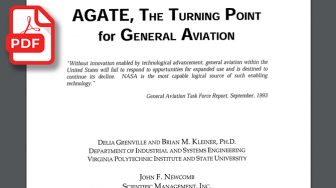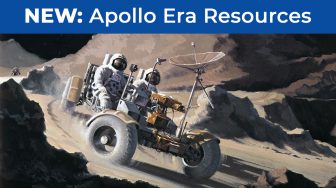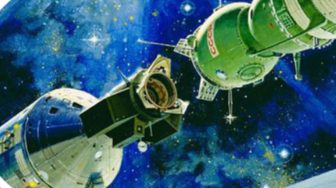results
-
 Advanced General Aviation Technology Experiment
Advanced General Aviation Technology ExperimentThis case study was developed in the interest of continuously improving program and project management at NASA. To augment a traditional case method approach, a theoretical framework adopted was from the sociotechnical systems tradition. These exercises prompt participants to understand AGATE success from the perspective of the NASA Project Life Cycle. Project Life Cycle variances […]
-
 Apollo 1 Case Study (SMA-OV-WBT-118)
Apollo 1 Case Study (SMA-OV-WBT-118)This course provides a brief overview of the Apollo 1 mishap which occurred at NASA KSC in 1967.
-
 Apollo 1-Challenger-Columbia Case Study
Apollo 1-Challenger-Columbia Case StudyWayne Hale’s Ten Rules for Engineering for Space is the focus of Remembrance Day 2014. As former NASA Flight Director and Space Shuttle Program Manager, Hale has compiled a list of lessons learned based on the Apollo 1, Challenger and Columbia disasters.
-
 Apollo 13 Case Study (SMA-OV-WBT-119)
Apollo 13 Case Study (SMA-OV-WBT-119)This course provides a brief overview of the Apollo 13 mishap which occurred in 1970.
-
 Apollo Era Resources
Apollo Era ResourcesA collection of articles and publications, case studies, and videos on the Apollo program to assist researchers, facilitators, and the technical workforce.
-
 Ares I-X Upper Stage Simulator
Ares I-X Upper Stage SimulatorThe opportunity to build a new launch vehicle that can loft humans into space does not come along often. The Ares family of launch vehicles, conceived in response to the 2004 Vision for Space Exploration, presented the first chance for NASA engineers to get hands-on experience designing and building a human-rated system since the development […]
-
 Ariane 5 Case Study (SMA-OV-WBT-134)
Ariane 5 Case Study (SMA-OV-WBT-134)This course is designed to provide you with an overview of the Ariane 5 failure, which occurred on June 4, 1996. Arianespace, the world’s first commercial launch provider, developed and operated the Ariane family of launch vehicles on behalf of the European Space Agency (ESA). Ariane 5 Flight 501 was the first flight for the Ariane 5 launch vehicle series. It launched from the Guiana Space Center in Kourou, French Guiana. The vehicle self-destructed 37 seconds after lift-off.
-
 Asynchronicity Case Study
Asynchronicity Case StudyIn an extraordinary display of international cooperation during the height of the Cold War between the United States and former Soviet Union, television viewers around the globe tuned in July 17, 1975 to witness Apollo-Soyuz Test Project (ASTP) astronauts and cosmonauts shaking hands between their docked, orbiting spacecraft. The Soyuz crew undocked their spacecraft and landed in Russia on July 21. The Apollo crew continued on-board experiments until their July 24 re-entry. During descent, the crew did not activate the Apollo’s Earth Landing System (ELS) at the correct altitude. As a result, toxic propellant fumes entered the Command Module (CM) through open cabin pressurization valves before splashdown, threatening the lives of America’s first orbital ambassadors.
-
 Challenger Case Study (SMA-OV-WBT-120)
Challenger Case Study (SMA-OV-WBT-120)This course provides a brief overview of the Challenger mishap which occurred at NASA in 1986.





